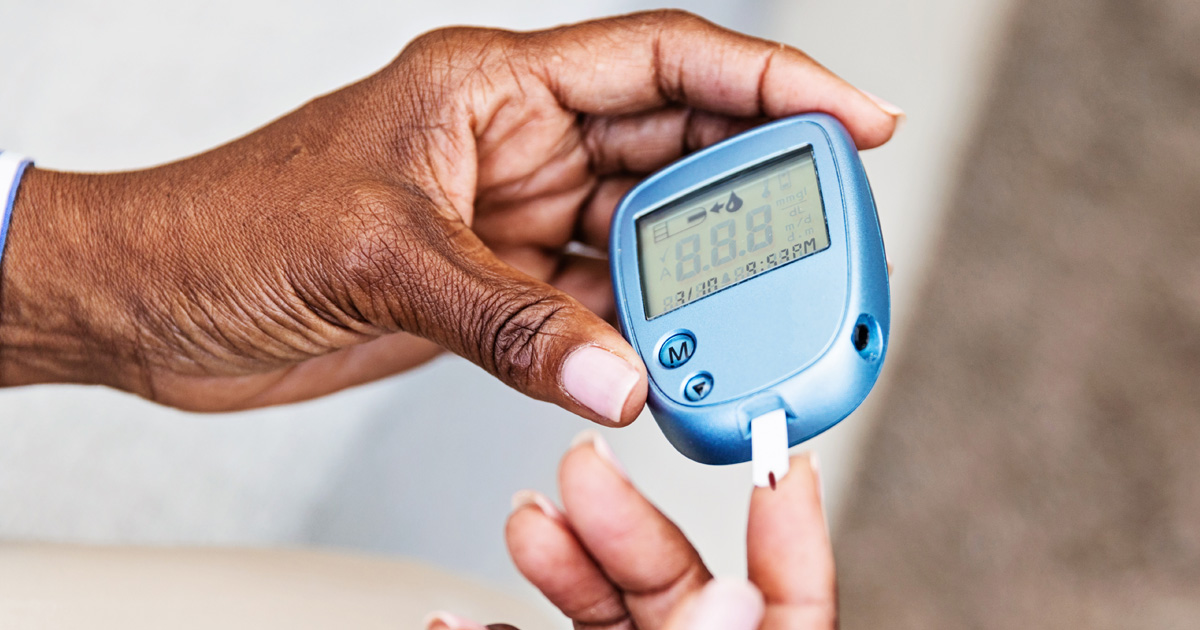


November 7, 2021
No matter where you are in your fight, here’s where you need to be.
Whether you’ve been newly diagnosed, have been fighting against type 1 or type 2 diabetes for a while, or are helping a loved one, you’ve come to the right place. This is the start of gaining a deeper understanding of how you can live a healthier life—with all the tools, health tips, and food ideas you need. Wherever you’re at with your diabetes, know that you have options and that you don’t have to be held back. You can still live your best life. All you have to do is take action and stick with it.
Understanding type 1
Here’s what you need to know about type 1 diabetes. Type 1 diabetes occurs at every age and in people of every race, shape, and size. There is no shame in having it, and you have a community of people ready to support you. Learning as much as you can about it and working closely with your diabetes care team can give you everything you need to thrive.
In type 1 diabetes, the body does not produce insulin. The body breaks down the carbohydrates you eat into blood sugar (blood glucose) that it uses for energy—and insulin is a hormone that the body needs to get glucose from the bloodstream into the cells of the body. With the help of insulin therapy and other treatments, everyone can learn to manage their condition and live long, healthy lives.
Remember: this is a condition that can be managed. By living a healthy lifestyle filled with exercise and proper diet, you can live a normal life and do everything you set out to do.
Understanding type 2
Type 2 diabetes is the most common form of diabetes—and it means that your body doesn’t use insulin properly. And while some people can control their blood sugar levels with healthy eating and exercise, others may need medication or insulin to help manage it. Regardless, you have options—and we’re here with the tools, resources, and support you need.
A key part of managing type 2 diabetes is maintaining a healthy diet. You need to eat something sustainable that helps you feel better and still makes you feel happy and fed. Remember, it’s a process. Work to find helpful tips and diet plans that best suit your lifestyle—and how you can make your nutritional intake work the hardest for you.
Fitness is another key to managing type 2. And the good news, all you have to do is get moving. The key is to find activities you love and do them as often as you can. No matter how fit you are, a little activity every day can help you put yourself in charge of your life.
Understanding gestational diabetes
Gestational diabetes can be a scary diagnosis, but like other forms of diabetes, it’s one that you can manage. It doesn’t mean that you had diabetes before you conceived or that you will have diabetes after you give birth. It means that, by working with your doctor, you can have a healthy pregnancy and a healthy baby. No matter what, know that you have all the support you need for both you and your baby to be at your best.
We don’t know what causes gestational diabetes, but we know that you are not alone. It happens to millions of women. We do know that the placenta supports the baby as it grows. Sometimes, these hormones also block the action of the mother’s insulin to her body and it causes a problem called insulin resistance. This insulin resistance makes it hard for the mother’s body to use insulin. And this means that she may need up to three times as much insulin to compensate.
The key to treating it is to act quickly—as treatable as it is, gestational diabetes can hurt you and your baby. Work with your doctor to keep your blood sugar levels normal, through special meal plans and regular physical activity. Your treatment may also include daily blood sugar testing and insulin injections.
Understanding diabetes from other causes
In addition to type 1, type 2, and gestational diabetes, a small minority of people develop specific types of diabetes due to other causes. This includes:
Monogenic diabetes syndromes, such as neonatal diabetes and maturity-onset diabetes of the young (MODY)
Diseases of the exocrine pancreas, such as cystic fibrosis and pancreatitis
Drug or chemical-induced diabetes, such as with glucocorticoid use, in the treatment of HIV/AIDS or after organ transplantation
Because these types of diabetes are rare, they are often misdiagnosed as other types of diabetes. You can learn more about these types of diabetes in the Classification and Diagnosis of Diabetes section in the Standards of Medical Care in Diabetes. If you think you might have one of these types, be sure to talk with your doctor.
Understanding prediabetes
When it comes to prediabetes, there are no clear symptoms—so you may have it and not know it. Here’s why that’s important: before people develop type 2 diabetes, they almost always have prediabetes—blood sugar levels that are higher than normal but not yet high enough to be diagnosed as diabetes. You may have some of the symptoms of diabetes or even some of the complications.
